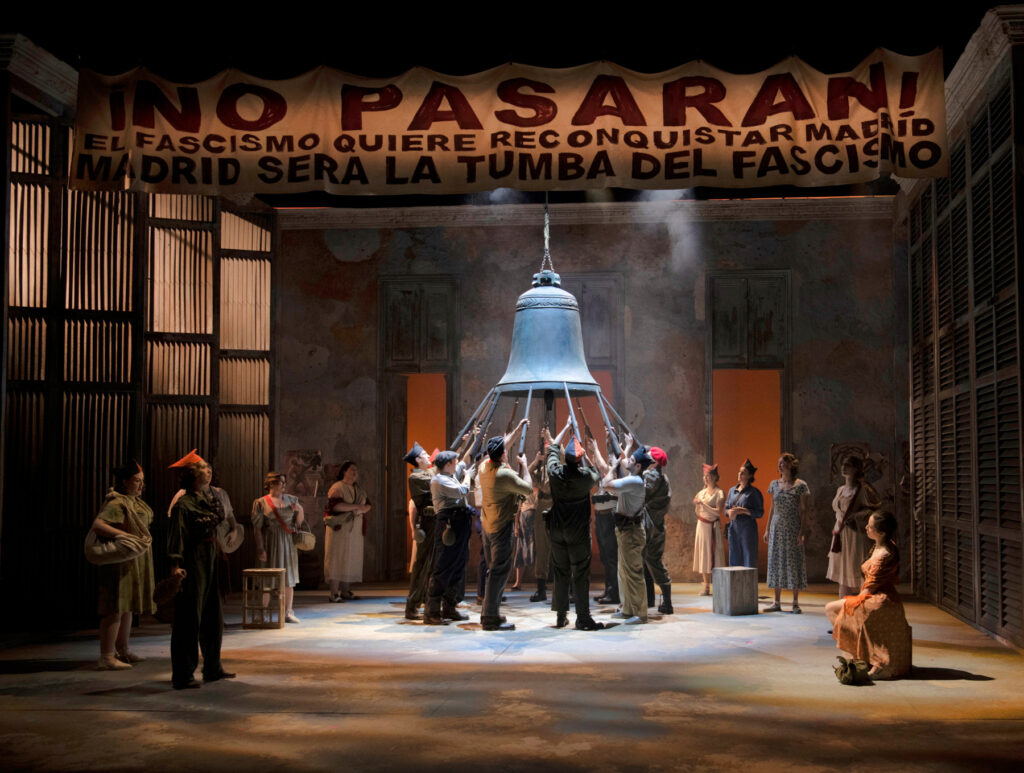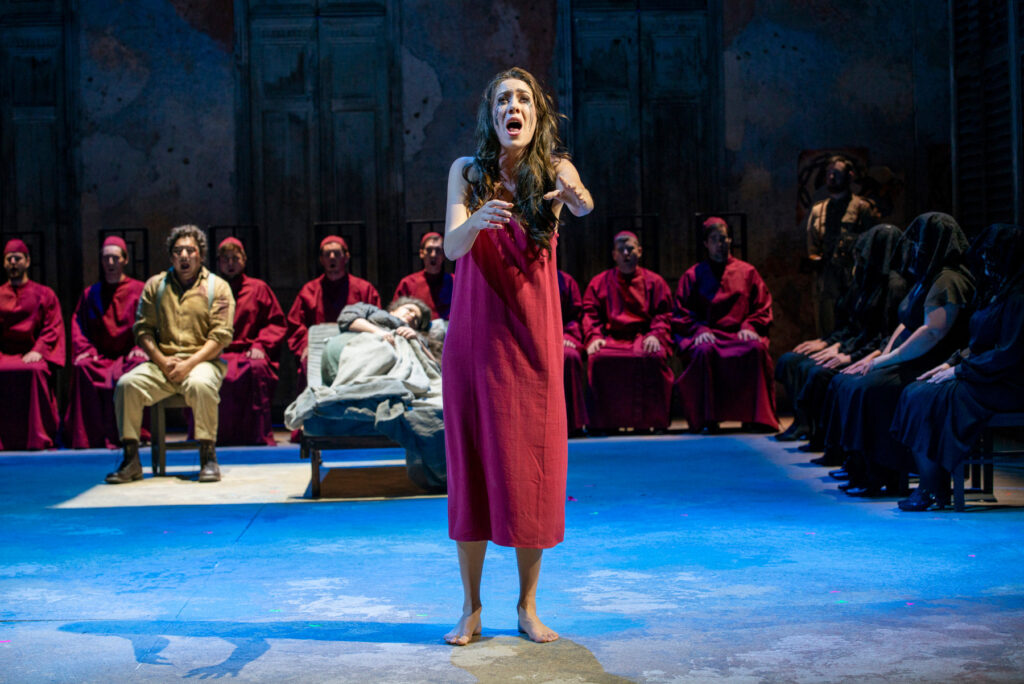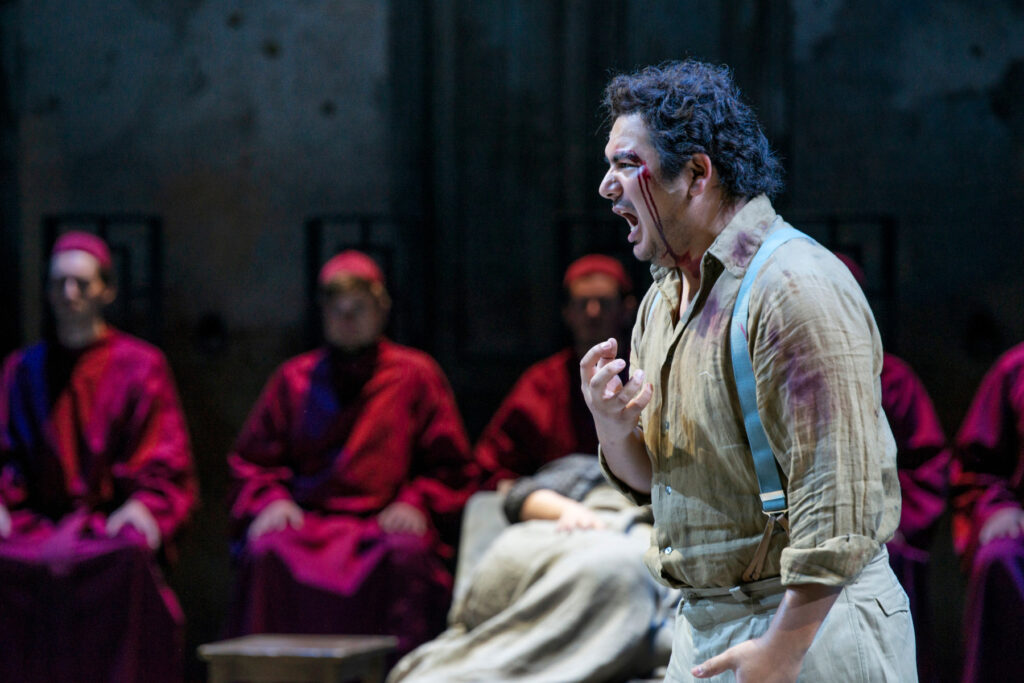Famous for presenting rare operatic repertoire, it might come as a surprise to find Il trovatore programmed to open this year’s Wexford Festival. Presented in its French version, however, this certainly is a rarity. Verdi made relevant modifications to the score to fit the French text for a production at Paris in 1857, but it hardly departs in any important respect from the usual Italian version, other than to include a ballet, as was custom for operas in that city, and some changes to the part of Azucena. This production only really confirms that the adaptation doesn’t offer anything dramatically or musically significant that the Italian version lacks.

If anything, the French text rather dampens the performance of vocal music that was originally written with the flair and colour of Italian words in mind, and the singers here aren’t entirely comfortable with it – no doubt used to the music in its Italian form. With only an indistinct, catarrhal grasp of vowels by the soloists, the vocal lines seem timbrally closed, at least in the first stretch of this opening performance, before growing into the music more confidently. Eduardo Niave’s Manrique is small of voice to begin, not entirely stepping out of recessed singing that is first heard offstage. He becomes more fired up by passion later, but seemingly more for his duty to wage war rather than love for Leonore. By comparison Giorgi Lomiseli’s Comte de Luna exudes a beautifully focussed fervour for her, if lacking the darker dimension of cunning that this character needs. Despite apparently being ill, which may explain a certain reserve in her performance, Lydia Grindatto ploughed on, delivering a finely etched account of Leonore that told of vulnerability and suffering. Kseniia Nikolaieva’s Azucena may have been singing in any language, or none in particular, but there is a hauntingly throaty, moody quality in her execution as though projected from within. That brings drama to the performance in the sense she conveys of being warped by her inability to overcome her mother’s tragedy at the hands of the Count and Manrique’s father, and her desire for revenge.

Like the production overall, the twenty-or-so minute ballet sequence which opens act three is somewhat tame. The Count first broods and then falls asleep, so it’s as though what follows are his dreams. A video projection carries a montage of recorded footage from the Spanish Civil War, where director Ben Barnes locates the work. There is some generalised fighting and, in silhouette, two figures embrace, as though in a nightmare vision for the Count who comes to learn that Leonore loves his sworn enemy Manrique instead of him (but eventually revealed to be his brother). As such, the sequence is integrated with the drama – fortunately there’s almost no classical ballet routine to detract from its action. But nor does it particularly advance the plot itself or this production’s concept. It therefore seems a missed opportunity that only creates the effect of a needless obstruction to the narrative, as almost all those pointless French operatic ballets are, however good the music is in itself, which masterfully quotes and develops various themes from the rest of the opera.

The concept of the Count’s representing the reactionary forces of the Spanish fascists, and Manrique and Leonore the republican is sound in principle, even if it isn’t explored in much detail beyond costumes and the video projections for the ballet sequence alone. Azucena and her fellow gypsies function here as a rather indeterminate force between those two sides (anvils, or equivalent percussion, are not very prominent in the eponymous chorus, for which the crowd gathers round a bell they intend to strike, presumably to signal the start of some action). Situating the work within a recent, specific episode in Spanish history also downplays the more elemental, legendary nature of its original setting in the now distant and more obscure civil war of the early 15th century, ironically working against this year’s festival theme of ‘myths and legends’. For all that it lacks dramaturgical complexity and dynamism, this staging does at least – if perhaps only by default – maintain a clear focus on the intricate network of human relationships which plays out during the opera. Marcus Bosch conducts the Wexford Festival Opera Orchestra in a reading of the score that brings out its poignancy more than its dramatic, tragic thrust.
Curtis Rogers
Le Trouvère
Composer: Giuseppe Verdi
Libretto: Salvadore Cammarano, adapted into French by Émilien Pacini
Cast and production staff:
Manrique – Eduardo Niave; Le Comte de Luna – Giorgi Lomiseli; Leonore – Lydia Grindatto; Azucena – Kseniia Nikolaieva; Fernand – Luca Gallo; Ruiz – Conor Prendiville; Inès – Jade Phoenix; Un vieux Bohémien – Philip Kalmanovitch; Un Messager – Vladimir Sima; Un Geolier – Conor Cooper
Director – Ben Barnes; Designer – Liam Doona; Movement Director – Libby Seward; Lighting Designers – Daniele Naldi & Paolo Bonapace; Conductor – Marcus Bosch; Chorus of the Wexford Festival Opera and The Wexford Festival Opera Orchestra
Wexford Festival Opera, National Opera House, Wexford, Ireland, Friday 17 October 2025
Top image: Lydia Grindatto, Jade Phoenix and Chorus of Wexford Festival Opera 2025
All photos by Pádraig Grant courtesy of Wexford Festival Opera